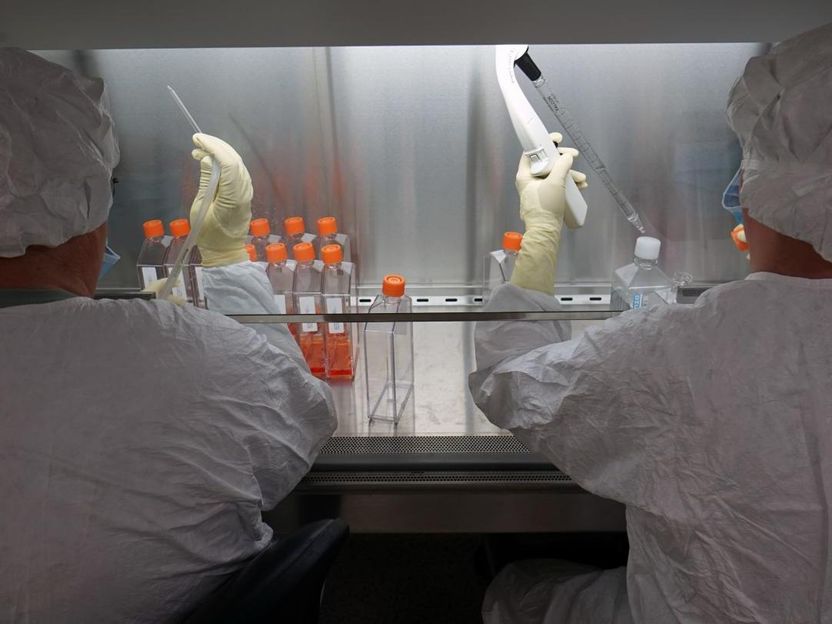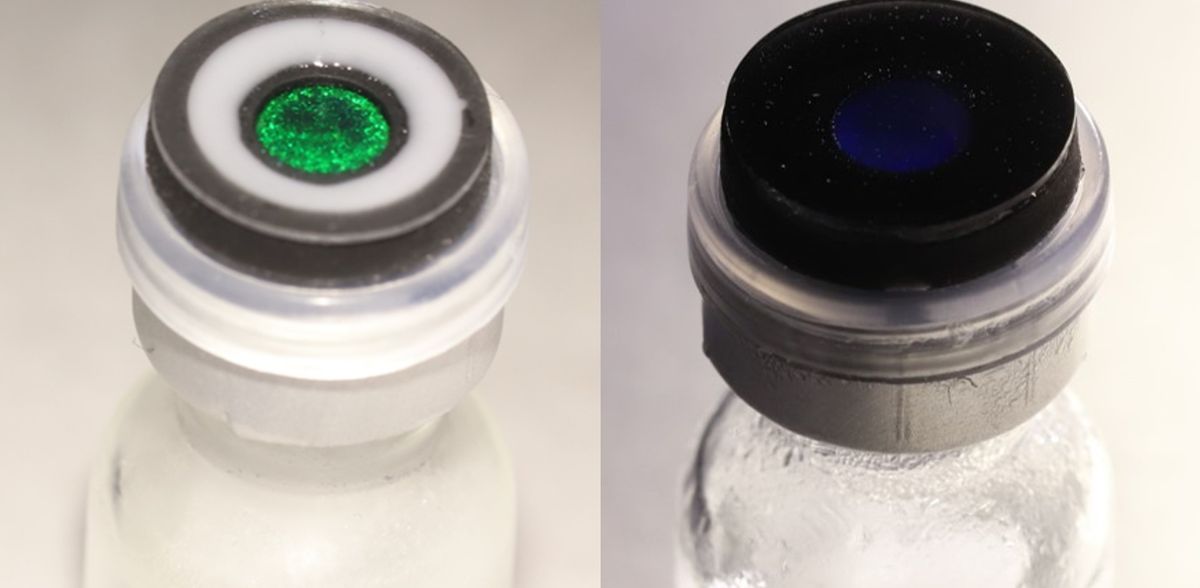Color-changing material shows when medications get too warm
Some foods and medicines, such as many COVID-19 vaccines, must be kept cold. As a step toward a robust, stable technique that could indicate when these products exceed safe limits, researchers in ACS Nano report a class of brilliantly colored microcrystals in materials that become colorless over a wide range of temperatures and response times. As a proof of concept, the team packaged the color-changing materials into a vial lid and QR code.
Walk-in freezers and refrigerated trucks generally maintain their set temperatures, but accidents can happen. Wireless sensors can monitor the temperature of individual products, but these devices produce a lot of electronic waste. Recently, researchers have suggested using materials that act as visual indicators to provide this information with less waste. Yet some current options using colorful reactions or dyes produce hues that can fade. Or they only track above-freezing temperatures, which isn’t useful for some COVID-19 vaccines that can actually start breaking down below freezing — above -4 or -94 degrees Fahrenheit. So, Yadong Yin, Xuemin Du and colleagues wanted to develop a better color-changing material with tunable melting to track a wide range of temperatures.
The researchers used structural colors, instead of dyes, for their indicator system. The team made glycerol-coated silicon dioxide nanoparticles, which appeared bright green or red when they clustered together into microcrystals in water. Next, they created liquids with variable melting points by mixing different proportions of polyethylene glycol or ethylene glycol and water. When these two parts were put together, they could produce an irreversible color loss when the temperature-triggered solution melted and the microcrystals broke apart. The materials could be customized to track temperature exposures from -94 to +99 degrees Fahrenheit that lasted from a few minutes to multiple days. In other experiments, the two-part indicator systems were packaged into flexible round vial labels and a QR code. These systems were very sensitive and successfully indicated when the materials got too warm. The researchers say that structural color-changing materials hold promise for the diverse scenarios encountered in medical cold supply chains.
Original publication
Other news from the department science

Get the life science industry in your inbox
By submitting this form you agree that LUMITOS AG will send you the newsletter(s) selected above by email. Your data will not be passed on to third parties. Your data will be stored and processed in accordance with our data protection regulations. LUMITOS may contact you by email for the purpose of advertising or market and opinion surveys. You can revoke your consent at any time without giving reasons to LUMITOS AG, Ernst-Augustin-Str. 2, 12489 Berlin, Germany or by e-mail at revoke@lumitos.com with effect for the future. In addition, each email contains a link to unsubscribe from the corresponding newsletter.
Most read news
More news from our other portals
Last viewed contents
Joe_Hin_Tjio
Rfam
Turner_syndrome
Without ancestral gene life on Earth might not have evolved beyond slime
Product_Red
Category:HIV/AIDS_articles
High-throughput drug screening in 3D

Improving the lifetime of bioelectrodes for solar energy conversion
Alstrom_syndrome






















































